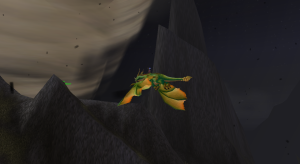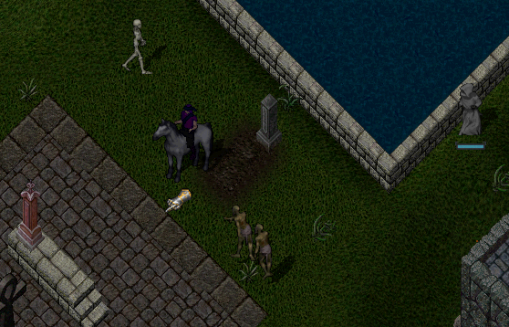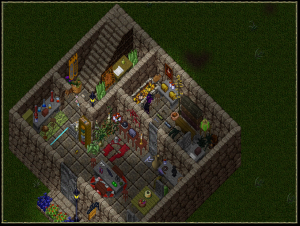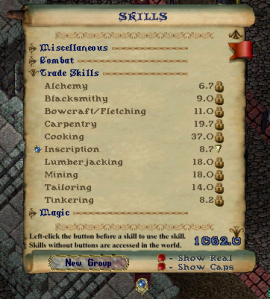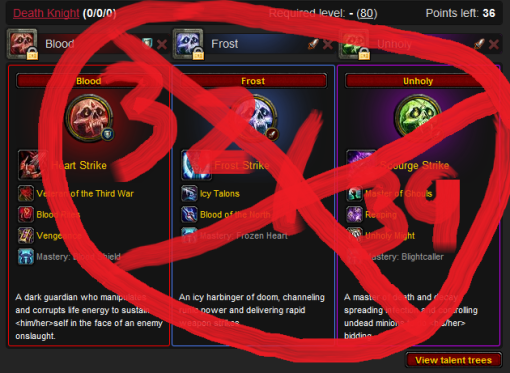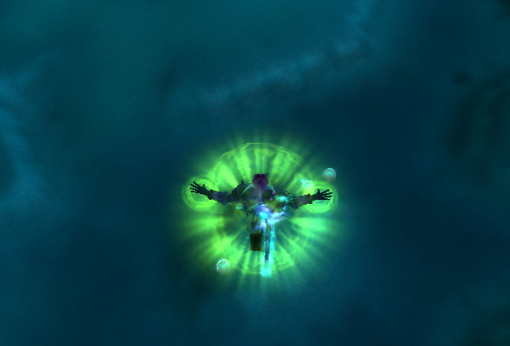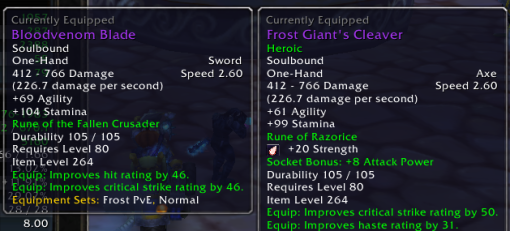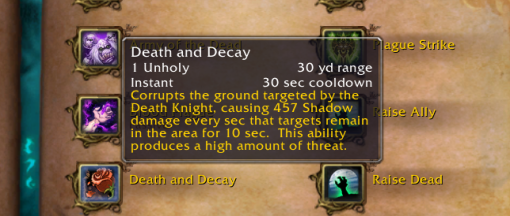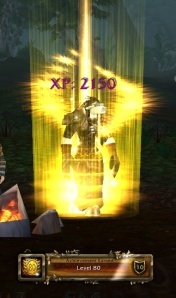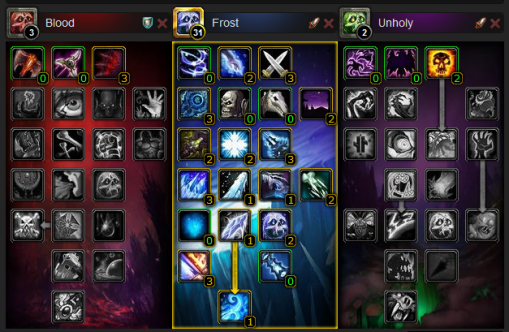I’m only 84. I know, how tragic! Can’t do heroics yet, can’t run around a city at max level being idle, oh the woe of it all. However, I did learn Necrotic Strike at 83. And I’ll admit that when I read about the ability all those months ago, I cried “another PvP ability! Wah!” Only two days after learning the skill, I am in love with it.
There are a lot of casters in every instance. Bosses cast spells. Healers cast spell. Necrotic Strike, in my non-heroic dungeon experience, works on these mobs. I haven’t had any immunes that I can remember. For a typical example of what the spell does, it turns a 2.0s cast into a 2.6s cast. That’s a big difference.
Aside: This post is speculative, however. If NS doesn’t work on raid bosses or boss encounter adds, well, sorry. Then it’s mostly a wash in non-trash PvE. Sucks, but I won’t be entirely surprised (Dark Simulacrum will likely be fairly unhelpful in raiding).
If you’re ever assigned to interrupt something in a raid setting, you should almost always be waiting until the last possible second to cast your interrupt. Why? Well, mobs don’t melee or do anything else evil while they’re casting. So your healers get a reprieve, and people don’t take damage, etc. And NS makes that both easier and more effective. An extra half second can be the difference between not interrupting and interrupting or simply force the boss into another few milliseconds of cast time.
Fitting Necrotic Strike into your rotation
Since it costs only one Unholy Rune, it’s pretty easy for most specs. Unholy replaces an SS with an NS. Blood can easily use a Death Rune (they get a lot of them from Death Striking) to NS. Frost is a little more complicated because we typically want to use Unholy Runes strictly for PS, Obliterate, and (in AoE situations) DnD. So that doesn’t leave a lot left over.
Typically what I have been doing is either using Blood Tap, replacing Obliterates with HB/NS, or using Death Runes from Blood Strikes. If you end up with one Death Rune, the other one can be used for Pillar of Frost or something else that usually disrupts the rotation.
All of these options involves stretching our limited GCD space. So be warned: excessive NSing will often lead to an overabundance of resources: RP, runes building up, etc. Make sure you’re not NSing more than absolutely necessary. Remember that as long as a mob starts a cast while NS is active, the whole cast will be affected.
Where to use Necrotic Strike?
- Regular instances. Mob names typically give you a hint as to whether they are spellcasters or not. Or just check if they have mana bars. If they do, it’s a safe bet NSing them will be helpful.
- Soloing. It’s not useless when soloing. When you have to kill caster mobs, you usually have to kill more than one of them, so at least you know when you have to NS. However, often when you engage a caster mob it immediately starts casting, making NSing less than efficient. Interrupting or just straight out killing mobs while soloing is likely more effective.
- Raiding. I’ll likely have more updates on this once I start raiding/just link to what EJ posters put up regarding using this in raids. If you’ve started raiding and have some advice, please let me know!

